|
Back on November 11, 2016, I wrote an article here about a world premiere play I saw in Culver City called Vicuña by Jon Robin Baitz. It was probably the strangest experience I've had seeing a play. What made it so other-worldly? Well, first, the play was a political satire about, as I wrote at the time, "a blustering real estate tycoon and reality TV star who—to everyone’s surprise—becomes a major party’s nominee for President." And second, look at the date. I'd seen the play the night before -- which was only two days after the 2016 presidential election when Trump was elected to the White House. The play was very funny -- though there was almost no laughter in the theater. It was eerie. I should add, too, that it was not a comedy, and takes a dark turn in the second act, making the evening all the more chilling. I don't explain why in the article, not wanting to give anything away. But since enough time has passed, I'll include a brief mention of it all at the end of this piece for those interested. I thought it was timely to repeat the original article about the play. For the longest time, Trump's win killed the show's future life. The comedy and satire were too raw. However, it finally did get a production in Washington, D.C. -- to deserved good reviews. I don't know about productions since then, but enough time has passed that it would be very effective today. In fact, it film adaptation would be timely for one of the streaming services. And it would be inexpensive to make, since the set locations are very limited. So, here's that original piece. Written three days after Trump was elected, seen the night before, two days after. A wonderful political satire, where no one in the theater was laughing. As I said, I'll update the play's plot a bit after the photo at the end. Vicuña Well, that was an odd experience. I had tickets a couple weeks ago to see a world premiere production of the play Vicuña by Jon Robin Baitz, which is running at the Kirk Douglas Theatre in Culver City. However, when I had bought the tickets a few months earlier, it had never occurred to me -- given a lifetime of experience -- to check to see if there'd be any conflict with the beloved Chicago Cubs and the World Series. As it happened, there was. Who'd a thought? So, I blew off the show. However, I'm very slightly acquainted with Robbie Baitz (only through email. We exchanged a lot of them during the last Writers Guild strike several years back), so I did want to see it. Plus, the story sounded interesting, and I'd have wanted to see it regardless. Happily, I was able to exchange seats for another evening, with a service charge. And so I went last night. Why is that an odd experience? Here's the premise of the show, described as a satire on the Center Theatre Group's website -- "A tailor to the wealthy, powerful, and famous struggles to serve a very unusual client: a blustering real estate tycoon and reality TV star who—to everyone’s surprise—becomes a major party’s nominee for President. As the election spins out of control, the tailor and his apprentice are forced to examine their roles as confidants and image-makers for the candidate…and whether the right suit has the power to clinch the presidency." I have absolutely no doubt that watching the play two weeks ago was an UTTERLY and TOTALLY different reality from two days after the actual, real-life election. Honestly, I really wasn't sure I was even up for going to see a satire about this, so soon after votes were in, and considered blowing it off again. But last month I'd sent a note Robbie that I'd be going, and even though I don't even know if he remembered, I felt a certain obligation. And the truth is that it is indeed a tough play now to sit through. To be clear, when I say "now," I mean literally that. Now, two days after the election. I don't think it will be as much the case in three months, and likely (hopefully) not at all in a year. But now? Yes, it was difficult. There are a lot of very funny lines in the first act, though I think I only laughed twice -- and both cases had nothing to do with politics. But it was certainly well-written. What's good to note though is that, although described as a satire, that doesn't mean the whole play is funny -- and, in fact, the second act takes a turn and becomes more dramatic. And then ratchets things up even more. And it's really quite strong, building surprisingly to an unexpected impactful conclusion. Make no mistake, good as the show is, it was still very raw and difficult to watch only two days after the election -- the audience was very responsive throughout although clearly muted, which was equally clear watching faces and body language at intermission -- but the show nonetheless works very well even under such conditions because ultimately it's not a joke-fest making fun of the character and situation but turns out to have a meaningful subtext that bubbles to the surface and takes over. Jon Robin Baitz is a terrific writer, with a great many plays to his credit, perhaps most notably Other Desert Cities which got a Tony nomination as Best Play and won the Outer Circle Critics Award in 2011. He also created the TV series Brothers & Sisters. Harry Groener (who most people would like recognize from his many genial appearances on TV and films, as well as Broadway) stars at the candidate. And the other recognizable actor in the show is Brian George, who plays the tailor, and who has a very long acting career, too, though most-certainly is best known as "Babu" on Seinfeld. I noticed a bunch of stumbles in the first scene (it's possible that, being a first production and so timely, there are some line changes being tweaked), perhaps too the rawness of the reality affects the cast, as well. In any event they were gone by the end of the first act More to the point, the whole cast was very good -- Ramiz Monsef plays the outspoken apprentice tailor whose parents have a questionable immigration status. And Samantha Sloyan is the candidate's daughter and campaign manger, who begins to see the quandry she's involved in as her father's dark side slowly surfaces. Also, in a small role, but with a great monologue is Linda Gehringer who plays the party's chairwoman sent on a mission to buy the candidate off so that he will drop out of the race before destroying the party, and possibly the country. I'm extremely glad I saw the show. I just wish it wasn't last night and under these circumstances. But it certainly made it unique, an experience most people won't have... And here's the very brief update about the plot which I left out of the original telling of the story. I left it out, in part because I didn't want to give away any of the plot. But also in part because it was just the fictional story of the play. Not real life. So, for people who do want to know the update -- Though what happened onstage was merely a fictional plot, with the passage of time, it turned out to be eerily prescient. Because the "dark turn" I reference is that this buffoonish political candidate in the first act turns out, in the second act, to have a deeply racist side that grows from there and manifests itself in a fascist vision of arrests and deportations. The audience wasn't laughing out of concern from knowing the future, but only because of what had just happened in the immediate present. Yet, given that we were all only reacting to the election two days before, consider what I wrote above, that one of the characters in the play is sent on a mission to get the joke candidate to drop out of the race before destroying the party, and possibly the country. What Jon Robin Baitz wrote was funny, rich and deep -- and went into totally fictional areas that I suspect he wishes today he was only imagining.
0 Comments
Last year, a one-man show played in Los Angeles, called Alex Edelman: Just for Us. It got raves reviews, and friends who saw it said it was great. I'd heard of it -- it began off-Broadway, and then transferred to Broadway, again to rave reviews. But I didn't see it. For several reasons, most notably because I'm still not going to the theater as much as before the pandemic. I was sorry I didn't go -- but thrilled when I saw that HBO recorded the show, and is airing it now. And for my taste, it was as terrific as its reputation. It’s very funny, but it’s not a comedy act. Rather, it’s a long, true story (with him playing many characters) about the night he decided to go to a meeting of neo-Nazis in New York City, but with a great many, long diversions into him talking about his life growing up in a very Ashkenazi Jewish household, anti-Semitism and more. I had heard Alex Edelman interviewed at length on the Naked Lunch podcast which I'd posted here, and he was funny and interesting. So, I was very glad when I saw HBO had recorded the show. (What I didn't realize until I tracked down the podcast, is that he briefly appeared on another of the Naked Lunch podcast. That was the one with guest Hannah Einbinder, who starred in the excellent HBO Max series Hacks. She and Edelman were dating at the time (and may still be, as far as I know -- or not), and host Phil Rosenthal called him up during the interview.) The Just for Us special is available On Demand, and HBO will be airing it again. At the moment, I counted 10 airings ahead. It runs about 85 minutes. If you do decide to watch, my only recommendation is that Edelman talks very fast (which he actually addresses, having ADHD), so I put on close captions so I could check if I missed a laugh. It’s not necessary, but it definitely helped. If you're interested, whether before watching the special to help decide if you want to watch, or afterwards if you enjoyed the special, here's the link for hour-long interview he did for the Naked Lunch podcast. This is the minute-long trailer, which will give you a very brief idea of the show, though it’s much more diverse and textured than this. In 1995, Jacques D’Amboise received the Kennedy Center Honor. D’Amboise was a ballet dancer and choreographer, and I suspect is not extremely well-known today. But then most ballet dancers aren’t as well-known as movie stars and singers even at their height. But I post this for two reasons – but one above all. It’s because the first number of the tribute is a superbly choreographed and fun dance to the tune of Cole Porter’s “Let’s Misbehave”. Oddly, the video cuts out Walter Cronkite’s introduction of the performers, which is a huge shame, since the two of them are his children, Charlotte and Christopher D’Amboise. Christopher has had a successful career as a dancer, choreographer and director, and Charlotte is a highly-accomplished dancer and actress who’s received two Tony nominations on Broadway. (In fact, I’ve posted a glorious video of her in the Kennedy Center Honors tribute to Mary Martin, where she recreated the number she was then-performing in the revue Bob Fosse’s Broadway, superbly singing and soaring in “I’m Flying” from Peter Pan.) The two siblings are absolutely great in the number, but the best part is whenever the camera cuts back to their father -- with the biggest beaming smile you can imagine. Let me put it this way, I don’t particularly like dancing…and I absolutely love this. It’s great. And it’s topped by the glow from the father watching them honor him. Very nice as this full video is, this number and that reaction alone are the reason I’m posting this. But I do also like the finale number in the segment – which is a lot of fun for a reason you’ll discover – but I specifically like it, too, because it’s sung by a performer I like a great deal, Judy Kuhn. Okay, as a bonus, here's the performance I referred to above, the re-creation of the “I’m Flying” number from Peter Pan with Charlotte D'Amboise. Notable for me is that they do the full number, which includes my favorite part, the great (and rarely seen) Flying Ballet at the end, which I dearly love. And you'll note the reaction from the audience here -- and these are all sophisticate adults in tuxedos and ball gowns, not a child in sight. And above all that, as great as Charlotte D'Amboise is here -- can you imagine the pressure (and joy) of her performing this in front of Mary Martin?! UPDATE: And something I never noticed before, for all the many times I've watched this, but did finally after having posted this: at the very end, a moment before the video cuts off, you'll see applauding her and joyously beaming in the audience, a man at the 5:17 mark wearing glasses -- her father, Jacques D'Amboise. For this morning's Holiday Music Fest, we have a real treat. As readers of these pages know, I'm a huge fan of the "Goes Wrong" folk -- who've done several stageplays, most recently the hilarious Peter Pan Goes Wrong which was on Broadway this year and I saw when I toured to Los Angeles, which I wrote about and posted the hour-long TV version (which also features David Suchet, TV's 'Hercule Poirot') here. And they also had a wonderful half-hour television series, The Goes Wrong Show, from which I posted their episode The Spirit of Christmas the other day here. Well, they did the same thing with A Christmas Carol -- a production that they unsurprisingly called A Christmas Carol Goes Wrong. It's a hilarious, utterly lunatic joy, which spins insanely out of control in the 51-minute production. And there are a couple of guests stars appearing, as well. And impressive guest stars they are, too -- Sir Derek Jacobi and Diana Rigg, throwing themselves deep into the insanity. (They have smaller roles in this than Suchet in Peter Pan, where he played the onstage Narrator, but both their performances are still notable throughout the production.) Joyeux, joyeux. Today, marks the anniversary of when Agatha Christie's play The Mousetrap opened on London's West End. That was on November 25, 1952 -- 71 years ago today. It's still running, after over 28,000 performances. By way of comparison, not long ago Phantom of the Opera closed as the longest-ever running production in Broadway history. It ran for 13,981 performances, over the course of 35 years. If it hadn't close and played for another 35 years…it still would be short of The Mousetrap. And that's if The Mousetrap closed tomorrow. Even the longest-running show in New York, off-Broadway's musical The Fantasticks, which had a remarkable run of 42 years and 17,162 performances fell far short, just over half as long. And again, The Mousetrap is still running. I have a theory about that. At some point long ago, it stopped by just a long-running play and instead become a tourist attraction, a stop to make when in London. As a kidling, I saw The Mousetrap on a family trip to Europe in 1966, the play's 14th year. A couple years later on another family trip, I picked up a poster which I have up on my walls. At the time, I was a little sorry that the poster had as many years as "16." Little did I know how paltry that number would be. When I saw the play in 1966, I went with my older brother. (Our folks went to a different play that day.) I was very excited about going, since I liked Agatha Christie mysteries and had heard so much about this monumentally long-running play. I'd read the novella beforehand, so I knew whodunnit -- but at intermission I asked my brother who he thought the killer was. (Don't worry, I won't give it away.) He kept changing his guess -- "No, wait, don't tell me, I think it's..." -- and I just politely sat there smiling at him. (Fun fact: He didn't guess it.) I do remember after the play, when we waited for our parents to leave the theater next door -- it was a matinee -- the cast eventually left the Ambassadors, and we spoke with one of the actors, and I still have the program he signed. I didn't know who he was, and while he might have done a lot in London theater after that, he didn't become known in the U.S. But it was fun. And I still have the program. (Sorry, "programme.") The Mousetrap has never played on Broadway, though there are plans to finally do so. In fact, they were trying for this year, but clearly that scheduling didn't pan out. That said, if you've seen the 2022 movie See How They Run with Sam Rockwell, Saoirse Ronan and Adrien Brody, it's a fun, comic-murder mystery that's centered around a murder that occurs backstage during the early days of The Mousetrap. The story is totally fictional, but real details are mixed in -- including Richard Attenborough being a character in the film (having starred in the original production, as is the show's producer John Woolf (who won an Oscar for production the movie musical Oliver!), it taking place at the Ambassador Theatre and a few other matters, as well as Agatha Christie taking part in the film, as well. And speaking of film, the most fascinating story surrounding The Mousetrap is that when movie producers signed a contract with Agatha Christie to make a movie of the play, it was with the one stipulation that no movie could be made until…the play closed! That was 71 years ago. In another odd twist, somewhat similar to that of the movie rights, Christie requested that the short story not be published in the United Kingdom as long as the play was running in London's West End. When I read about that, I couldn't figure out how I was able to have read it. But it turns out that the story was allowed to be published in the United States and appeared in the collection Three Blind Mice and Other Stories. I've still kept my copy all these years. A whopping 45-cents. And the original title is duly noted on the cover. And of course, as old as my copy of the book is, it doesn't compare to how old the play is and has been running. And Ol' Man, Mousetrap, it just keeps rolling along... To celebrate 60 years, the National Theatre is offering for a special free stream of Othello. It will stream for free on YouTube starting today, on Thursday, October 19, beginning at 7pm BST (which is 11 AM here in Los Angeles -- so, by the time this is posted, it will be up and running). And it will stay on YouTube until 22 October. It will then be available for free on the National Theatre at Home website until October. 26. UPDATE: In an earlier version of this "Media Alert," I wrote that it starred Adrian Lester and Rory Kinnear. That was incorrect. I wasn't able to find who was starring in this production, but tracked down that they had starred in an acclaimed 2013 National Theatre production, and figured that this was a repeat of that. It's not -- it's a new staging done this year. Sorry for the mistake. This is where it will stream on YouTube here. And this is the link for National Theatre at Home here. Here's the official trailer for the production. |
AuthorRobert J. Elisberg is a political commentator, screenwriter, novelist, tech writer and also some other things that I just tend to keep forgetting. Feedspot Badge of Honor
Archives
June 2024
Categories
All
|
|
© Copyright Robert J. Elisberg 2024
|

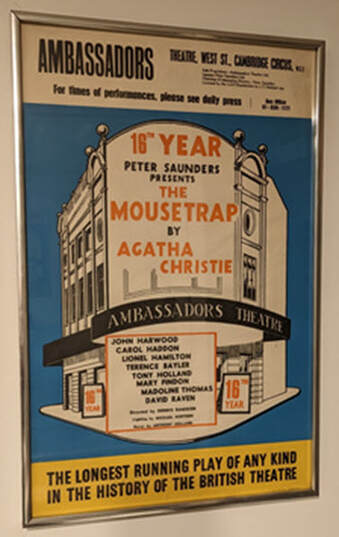
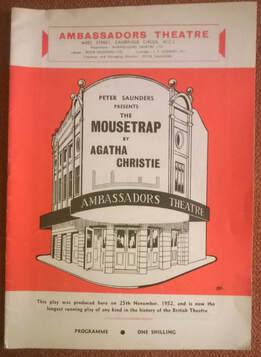
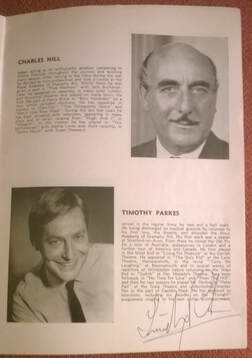
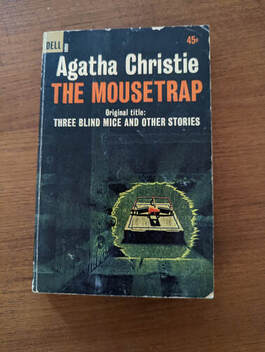



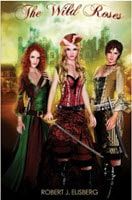
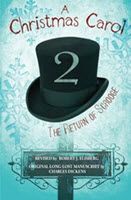

 RSS Feed
RSS Feed